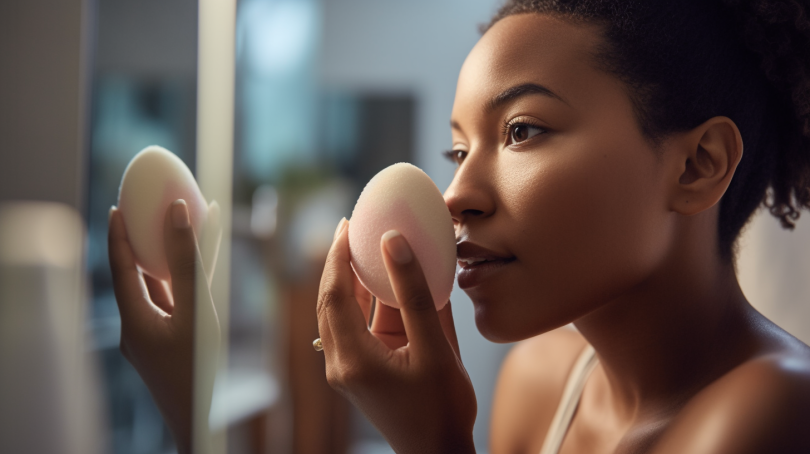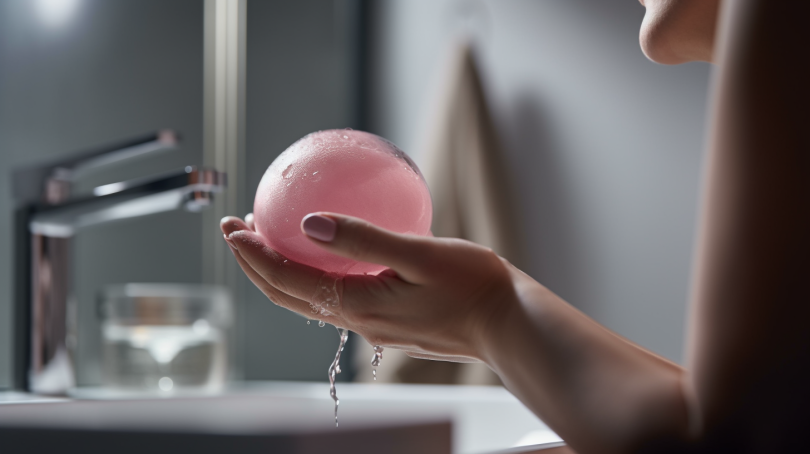How Frequently to Use an Exfoliating Brush: The Ultimate Guide
Exfoliating brushes have become increasingly popular in skincare routines. These brushes, when used correctly, can help to remove dead skin cells, unclog pores, and promote a smoother and more radiant complexion. However, it is essential to understand how often to use an exfoliating brush to avoid over-exfoliation and potential damage to the skin.
Why Should You Use an Exfoliating Brush?
Before we dive into the frequency of using an exfoliating brush, let’s first understand why incorporating this tool into your skincare routine can be beneficial.
Exfoliation is the process of removing dead skin cells from the surface of the skin. By doing so, you can reveal fresh and healthy skin underneath. Exfoliating brushes are designed to enhance this process by providing gentle yet effective exfoliation.
Here are some key benefits of using an exfoliating brush:
- Improved Skin Texture: Regular exfoliation with a brush can help smoothen rough patches and promote a more even skin texture.
- Brighter Complexion: By removing dead skin cells, an exfoliating brush can reveal a brighter and more radiant complexion.
- Unclogged Pores: Exfoliation helps to unclog pores and prevent breakouts by removing dirt, oil, and debris.
- Increase Absorption of Skincare Products: By removing the barrier of dead skin cells, exfoliating brushes allow skincare products to penetrate deeper into the skin for better absorption.
Determining Your Skin Type
The frequency of using an exfoliating brush depends on various factors, including your skin type. It is crucial to identify your skin type before incorporating an exfoliating brush into your routine.
Here are the common skin types:
- Normal Skin: Normal skin has a balanced level of oil and moisture. It is not too dry or too oily, with minimal sensitivity and few imperfections.
- Dry Skin: Dry skin lacks moisture and often feels tight or flaky. It may appear dull and have fine lines and rough patches.
- Oily Skin: Oily skin produces an excess amount of oil, leading to a shiny complexion, enlarged pores, and a higher risk of acne breakouts.
- Combination Skin: Combination skin is a mix of different skin types. Typically, the T-zone (forehead, nose, and chin) is oily, while the cheeks may be normal or dry.
- Sensitive Skin: Sensitive skin is easily irritated and prone to redness, itching, or burning sensations when exposed to certain products or environmental factors.
Different skin types have different tolerance levels for exfoliation. While exfoliating brushes can benefit all skin types, it’s important to adjust the frequency based on your specific needs.
Finding the Right Exfoliating Method
In addition to considering your skin type, it’s essential to choose the right exfoliating method that suits your preferences and skincare goals. There are two primary methods for using an exfoliating brush: manual exfoliation and electronic exfoliation.
- Manual Exfoliation: Manual exfoliation involves using a brush with soft bristles or natural fibers to manually scrub the skin in gentle circular motions. This method provides control and is suitable for all skin types, especially those with sensitive skin.
- Electronic Exfoliation: Electronic exfoliation involves using a battery-operated or rechargeable brush that vibrates or rotates to exfoliate the skin. This method offers convenience and can provide a deeper exfoliation, making it suitable for those with normal to oily skin.
Choose the exfoliating method that aligns with your preferences and suits your skin type. Remember, it’s crucial to be gentle when using an exfoliating brush to avoid irritating or damaging the skin.
Determining the Ideal Frequency
The ideal frequency of using an exfoliating brush depends on your skin type, sensitivity, and the specific product or tool you are using. Here are some general guidelines to help you determine how often you should use an exfoliating brush:
- Normal Skin: If you have normal skin, you can typically use an exfoliating brush 2-3 times per week. This frequency allows for regular exfoliation without overdoing it.
- Dry Skin: Dry skin tends to be more sensitive, so it’s best to limit exfoliation to once a week. Over-exfoliating can strip away essential oils and further dry out the skin.
- Oily Skin: Oily skin can tolerate more frequent exfoliation. You can use an exfoliating brush up to 4-5 times per week to help control oil production and unclog pores.
- Combination Skin: For combination skin, focus on adjusting the frequency based on different areas of your face. You may use the brush 2-3 times per week on the oily T-zone and once a week on the drier areas.
- Sensitive Skin: If you have sensitive skin, it’s crucial to be extra cautious. Start by using an exfoliating brush once every two weeks and gradually increase the frequency if your skin tolerates it well.
Remember, these are general guidelines, and it’s essential to listen to your skin’s needs. Pay attention to any signs of irritation or redness and adjust the frequency accordingly. It’s better to start with a lower frequency and gradually increase if your skin responds well.
Tips for Using an Exfoliating Brush Safely
To ensure you get the most out of your exfoliating brush while keeping your skin healthy, here are some tips to follow:
- Prep Your Skin: Before using an exfoliating brush, cleanse your face with a gentle cleanser to remove any makeup, dirt, or impurities.
- Moisten the Brush: Wet the bristles of the brush with warm water before applying any cleanser or exfoliating product.
- Gentle Pressure: Apply light pressure when using the brush on your face or body. Avoid scrubbing aggressively, as this can cause irritation.
- Circular Motions: Use gentle circular motions to massage the brush over your skin. This helps to promote blood circulation and ensures even exfoliation.
- Avoid Sensitive Areas: Be cautious around sensitive areas such as the eye area or any active breakouts. These areas require more delicate care and should be avoided or treated with a lighter touch.
- Follow with Moisturizer: After exfoliating, apply a moisturizer to replenish and hydrate the skin. This step is crucial to maintain the skin’s moisture balance.
Conclusion
Exfoliating brushes can be valuable tools in achieving smoother, brighter, and healthier-looking skin. By understanding your skin type, choosing the right exfoliating method, and determining the ideal frequency, you can incorporate an exfoliating brush into your skincare routine effectively.
Remember to start slow and gradually increase the frequency as your skin tolerates it. Listen to your skin’s needs and adjust accordingly. With proper usage and care, an exfoliating brush can be a game-changer in your skincare regimen.




